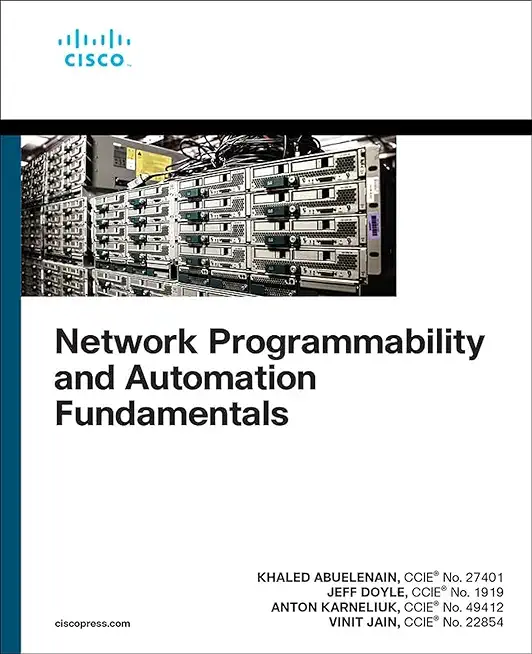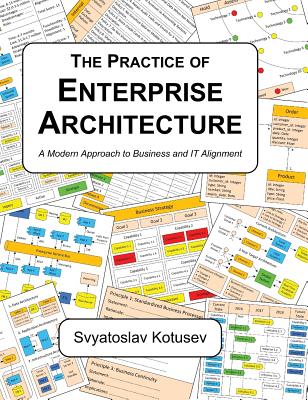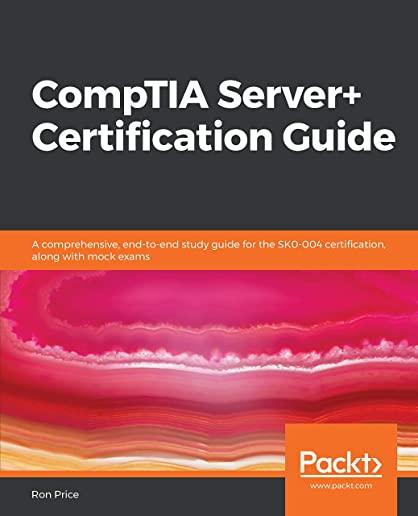Linux System Administration (LFS307) Training in St. Louis
Enroll in or hire us to teach our Linux System Administration (LFS307) class in St. Louis, Missouri by calling us @303.377.6176. Like all HSG
classes, Linux System Administration (LFS307) may be offered either onsite or via instructor led virtual training. Consider looking at our public training schedule to see if it
is scheduled: Public Training Classes
Provided there are enough attendees, Linux System Administration (LFS307) may be taught at one of our local training facilities.
|
We offer private customized training for groups of 3 or more attendees.
|
||
Course Description |
||
| Learn and practice essential Linux system administration tasks. This course is not specific to a particular Linux distribution and presents information about using Linux in a commercial environment.
Course Length: 4 Days
Course Tuition: $2800 (US) |
||
Prerequisites |
|
| Linux Fundamentals, installation, configuration, and some system administration experience recommended. | |
Course Outline |
|
Introduction
- Linux Foundation
- Linux Foundation Training
- Linux Foundation Certifications
- Linux Foundation Digital Badges
- Laboratory Exercises, Solutions and Resources
- Things Change in Linux and Open Source Projects
- E-Learning Course: LF207
- Distribution Details
- Labs
Linux Filesystem Tree Layout
- One Big Filesystem
- Data Distinctions
- FHS Linux Standard Directory Tree
- root (/) directory
- /bin
- /boot
- /dev
- /etc
- /home
- /lib and /lib64
- /media
- /mnt
- /opt
- /proc
- /sys
- /root
- /sbin
- /srv
- /tmp
- /usr
- /var
- /run
- Labs
User Environment
- Environment Variables
- Key Shortcuts
- Command History
- Command Aliases
- Labs
User Account Management
- User Accounts
- Shell Startup Files
- Management of User Accounts
- Locked Accounts
- Passwords
- /etc/shadow
- Password Management
- Password Aging
- The root Account
- SSH
- Labs
Group Management
- Groups
- Group Membership
- Group Management
- User Private Groups
- Labs
File Permissions and Ownership
- File Permissions and Ownership
- File Access Rights
- chmod, chown and chgrp
- umask
- Filesystem ACLs
- Labs
Package Management Systems
- Why Use Packages?
- Software Packaging Concepts
- Package Types
- Available Package Management Systems
- Packaging Tool Levels and Varieties
- Package Sources
- Creating Software Packages
- Revision Control Systems
- Available Source Control Systems
- The Linux Kernel and git
- Labs
dpkg
- DPKG (Debian Package)
- Package File Names and Source
- DPKG Queries
- Installing/Upgrading/Uninstalling
- Labs
APT
- APT
- APT Utilities
- Queries
- Installing/Removing/Upgrading Packages
- Cleaning Up
- Labs
RPM
- RPM (Red Hat Package Manager
- Package File Names
- RPM Database and Helper Programs
- Queries
- Verifying Packages
- Installing and Removing Packages
- Updating, Upgrading and Freshening RPM Packages
- Upgrading the Linux Kernel
- rpm2archive and rpm2cpio
- Labs
dnf and yum
- dnf
- yum
- Queries
- Installing/Removing/Upgrading Packages
- Additional dnf Commands
- Labs
zypper
- zypper
- Queries
- Installing/Removing/Upgrading Packages
- Additional zypper Commands
- Labs
Introduction to GIT
- Revision Control
- Know Where the Code is Coming From: DCO and CLA
- Available Revision Control Systems
- Graphical Interfaces
- Documentation
- Labs
Using Git: an Example
- Basic Commands
- A Simple Example
- Signing Off on Commits
- master vs main
- Labs
Processes
- Programs and Processes
- Process Limits
- Creating Processes
- Process Control
- Starting Processes in the Future
- Process States
- Execution Modes
- Daemons
- niceness
- Labs
Process Monitoring
- Process Monitoring
- Troubleshooting
- ps
- pstree
- top
- Labs
Memory Monitoring, Usage and Configuring Swap
- Memory Monitoring and Tuning
- /proc/sys/vm
- vmstat
- Swap
- Out of Memory Killer (OOM)
- Labs
I/O Monitoring and Tuning
- I/O Monitoring
- iostat
- iotop
- Labs
Virtualization Overview
- Introduction to Virtualization
- Hosts and Guests
- Emulation
- Hypervisors
- libvirt
- QEMU
- KVM
- Labs
Containers Overview
- Containers
- Application Virtualization
- Containers vs Virtual Machines
- Docker
- Docker Commands
- Podman
- Labs
Linux Filesystems and the VFS
- Filesystem Basics
- Filesystem Concepts
- Virtual Filesystem (VFS)
- Available Filesystems
- Journalling Filesystems
- Special Filesystems
- Labs
Disk Partitioning
- Common Disk Types
- Disk Geometry
- Partitioning
- Partition Tables
- Naming Disk Devices
- blkid and lsblk
- Sizing up partitions
- Backing Up and Restoring Partition Tables
- Partition table editors
- fdisk
- Labs
Filesystem Features: Attributes, Creating, Checking, Usage, Mounting
- Extended Attributes
- Creating and formatting filesystems
- Troubleshooting Filesystems
- Checking and Repairing Filesystems
- Filesystem Usage
- Disk Usage
- Mounting filesystems
- NFS
- Mounting at Boot and /etc/fstab
- automount
- Network Block Devices
- Labs
The Ext4 Filesystems
- ext4 Features
- ext4 Layout and Superblock and Block Groups
- dumpe2fs
- tune2fs
- Labs
Logical Volume Management (LVM)
- Logical Volume Management (LVM)
- Volumes and Volume Groups
- Working with Logical Volumes
- Resizing Logical Volumes
- LVM Snapshots **
- Labs
Kernel Services and Configuration
- Kernel Overview
- Kernel Boot Parameters
- Kernel Command Line
- Boot Process Failures
- sysctl
- Labs
Kernel Modules
- Kernel Modules
- Module Utilities
- modinfo
- Module Configuration
- Labs
Devices and udev
- udev and Device Management
- Device Nodes
- Rules
- Labs
Network Addresses
- IP Addresses
- IPv4 Address Types
- IPv6 Address Types
- IP Address Classes
- Netmasks
- Hostnames
- NTP
- Labs
Network Devices and Configuration
- Network Devices
- ip
- ifconfig
- Predictable Network Interface Device Names
- Network Configuration Files
- Network Manager
- Routing
- Virtual Network Interfaces
- DNS and Name Resolution
- Network Troubleshooting
- Network Diagnostics
- Labs
LDAP
- LDAP Authentication
- Labs
Firewalls
- Firewalls
- Interfaces
- firewalld
- Zones
- Source Management
- Service and Port Management
- Port Redirection
- Labs
System Init: systemd, SystemV and Upstart
- The init Process
- Startup Alternatives
- systemd
- systemctl
- Labs
Backup and Recovery Methods
- Backup Basics
- Backup vs Archive
- Backup Methods and Strategies
- tar
- Compression: gzip, bzip2 and xz and Backups
- dd
- rsync
- Backup Programs **
- Labs
Linux Security Modules
- Linux Security Modules
- SELinux
- AppArmor
- Labs
System Rescue
- Rescue Media and Troubleshooting
- Using Rescue/Recovery Media
- System Rescue and Recovery
- Emergency Boot Media
- Using Rescue Media
- Emergency Mode
- Single User Mode
- Labs
Closing and Evaluation Survey
- Evaluation Survey |
Course Directory [training on all levels]
Technical Training Courses
Software engineer/architect, System Admin ... Welcome!
- .NET Classes
- Agile/Scrum Classes
- Ajax Classes
- Android and iPhone Programming Classes
- Blaze Advisor Classes
- C Programming Classes
- C# Programming Classes
- C++ Programming Classes
- Cisco Classes
- Cloud Classes
- CompTIA Classes
- Crystal Reports Classes
- Design Patterns Classes
- DevOps Classes
- Foundations of Web Design & Web Authoring Classes
- Git, Jira, Wicket, Gradle, Tableau Classes
- IBM Classes
- Java Programming Classes
- JBoss Administration Classes
- JUnit, TDD, CPTC, Web Penetration Classes
- Linux Unix Classes
- Machine Learning Classes
- Microsoft Classes
- Microsoft Development Classes
- Microsoft SQL Server Classes
- Microsoft Team Foundation Server Classes
- Microsoft Windows Server Classes
- Oracle, MySQL, Cassandra, Hadoop Database Classes
- Perl Programming Classes
- Python Programming Classes
- Ruby Programming Classes
- Security Classes
- SharePoint Classes
- SOA Classes
- Tcl, Awk, Bash, Shell Classes
- UML Classes
- VMWare Classes
- Web Development Classes
- Web Services Classes
- Weblogic Administration Classes
- XML Classes
Business Training Courses
Project Managers, Business Analysts, Paralegals ... Welcome!
Upcoming Classes
Gain insight and ideas from students with different perspectives and experiences.
- Ruby Programming
29 April, 2024 - 1 May, 2024 - Introduction to Python 3.x
29 April, 2024 - 2 May, 2024 - Fast Track to Java 17 and OO Development
12 August, 2024 - 16 August, 2024 - Object-Oriented Programming in C# Rev. 6.1
24 June, 2024 - 28 June, 2024 - RED HAT ENTERPRISE LINUX AUTOMATION WITH ANSIBLE
3 June, 2024 - 6 June, 2024 - See our complete public course listing
Linux Unix Uses & Stats
Linux Unix is Used For:
Desktop
Mainframe Computers
Mobile Devices
Embedded Devices
|
Difficulty
|
Popularity
|
Year Created 1991/1971 |
|
Pros
Performance:
Linux supports many efficient tools and operates them seamlessly. Because it's architecture is lightweight it runs faster than both Windows 8.1 and 10.
Security:
Because Linux is an open-source software, anyone can contribute code to help enhance the users’ experience i.e., adding features, fixing bugs, reducing security risks, and more.
Software Development:
The terminal in Linux is a *wild card*. You can do almost anything with it. This includes software installation, application and server configurations, file system management, and etc.
Large-scale:
Open-source projects benefit from having an attentive community. As a result, Linux is more secure than Windows. Instead of installing anti viruses to clean malware, you just have to stick to the recommended repositories.
Efficient:
Developers have the convenience of running servers, training machine learning models, accessing remote machines, and compiling and running scripts from the same terminal window.
Free:
Linux is free (you can put it on as many systems as you like) and you can change it to suit your needs.
|
Cons
Learning Curve:
Linux is not for everyone, there is a learning curve in switching to Ubuntu. To actually learn Linux efficiently would take a user one to several years.
No Tech Support:
Unlike Windows, there isn’t a dedicated tech support, so getting help for things is up to you.
Designer Compatabilty:
Linux is not as user friendly as Windows or as ‘straight out of the box design’ As an example for design choices, Adobe hasn’t released any of its products to Linux users. So it’s impossible to run them directly. The Ubuntu alternative is a free software called GIMP.
Gaming Capabilities:
Most games aren’t available in Linux. But that’s not to say you can’t make it happen, it's just not as easy.
|
| Linux Unix Job Market |

Average Salary
|

Job Count
|

Top Job Locations
New York City |
|
Complimentary Skills to have along with Linux Unix
The following are types of jobs that may require Linux skills. The top 15 job titles on Dice.com that mention Linux in their postings are:
- DevOps Engineer
- Software Engineer - Java Developer - Systems Engineer - Systems Administrator - Senior Software Engineer - Network Engineer - Python Developer - Linux Systems Administrator - Software Developer - System Administrator - Linux Administrator - Linux Engineer - Senior Java Developer - C++ Developer |






